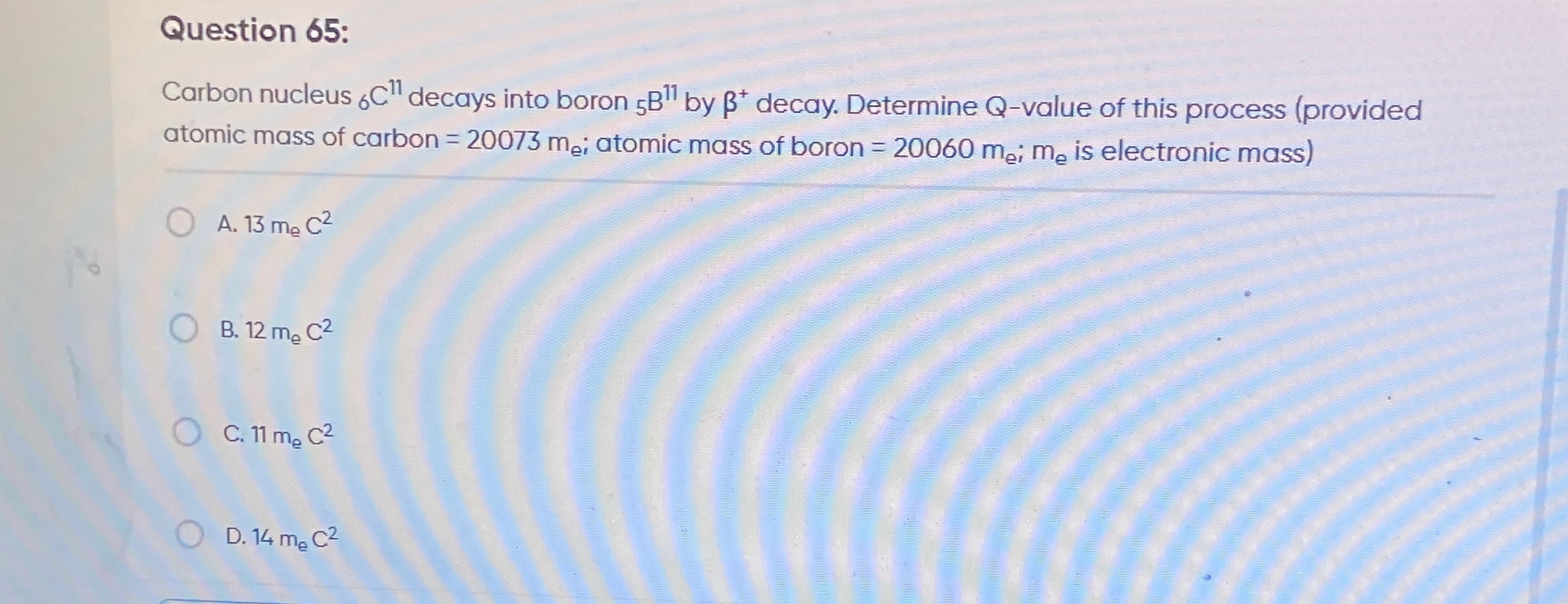Question
Question: Carbon nucleus $_6C^{11}$ decays into boron $_5B^{11}$ by $\beta^+$ decay. Determine Q-value of this...
Carbon nucleus 6C11 decays into boron 5B11 by β+ decay. Determine Q-value of this process (provided atomic mass of carbon = 20073 me; atomic mass of boron = 20060 me; me is electronic mass)

13 me C2
12 me C2
11 me C2
14 me C2
11 me C2
Solution
The Q-value of a nuclear decay is the energy released during the process, calculated from the mass difference between the reactants and products. For β+ decay, the reaction is: ZAX→Z−1AY+e++νe.
When using atomic masses (Matom), the Q-value for β+ decay is given by the formula: Q=[Matom(X)−Matom(Y)−2me]c2 where Matom(X) is the atomic mass of the parent nucleus, Matom(Y) is the atomic mass of the daughter nucleus, and me is the mass of an electron (which is equal to the mass of a positron). The factor of 2me arises from accounting for the electron masses associated with the atomic masses and the emitted positron.
Given: Atomic mass of carbon 611C (Matom(X)) = 20073me Atomic mass of boron 511B (Matom(Y)) = 20060me
Substituting these values into the Q-value formula: Q=[20073me−20060me−2me]c2 Q=[(20073−20060−2)me]c2 Q=[13me−2me]c2 Q=11mec2
The Q-value of this process is 11mec2.
